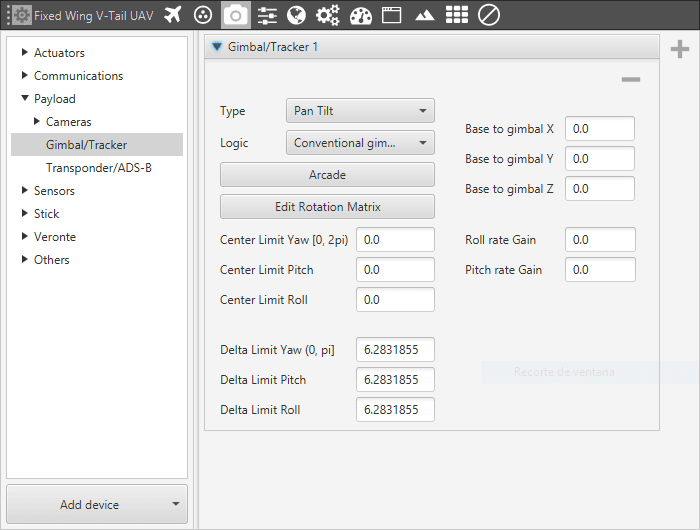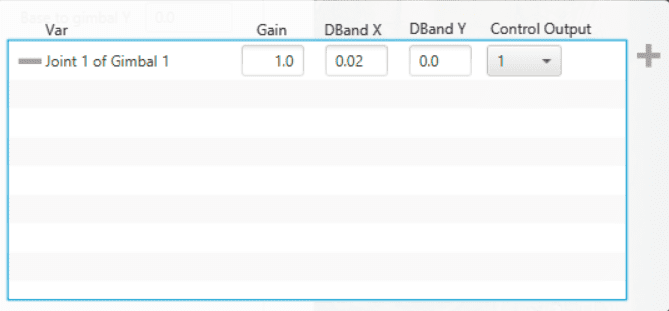Gimbal/Tracker¶
This menu allows the user to configure a Gimbal Camera or a Tracker Antenna. From here the user only needs to define the movements the system has (from predefined combinations of Pan, Tilt and Roll), its logic, a distance vector and the number of systems connected (up to a maximum of 2).

Gimbal/Tracker Menu - Configuration Parameters
Type. Defines the angles that Veronte will be controlling from the payload system from a Combination of Pan (Z axis, the same as Yaw), Tilt (Y axis, the same as Pitch) and Roll. The three options are as seen below:
Pan & Tilt.
Pan, Roll & Tilt.
Roll & Tilt.
Logic. Defines the kind of payload system configured.
Conventional gimbal. This option writes over the variables Joint 1-3 Gimbal 1-3 which are used later to configure the control and stabilization of the camera from Veronte.
Self-stabilized gimbal. The payload system only needs movement inputs and the variables mentioned will have no output.
Base to gimbal Vector. Defines the vector thats joins the Veronte Autopilot controlling the payload system and the payload system itself, in Veronte body axes.
Arcade. Configures the Arcade control of the payload system. For a new variable to be controlled, click on the top right “+” icon.
Var. Displays the variable over which the Arcade control will have its effect.
Gain. Value which multiplies the Var. to obtain the control value.
DBand X. Creates a non-effect area in which the Joystick won’t input control values. DBand X is applied to both left and right on the X axis. Value used to stop the stick from inputting control when at rest.
DBand Y. Same as DBand X but applied to the Y axis.
Control Output. Defines the value for the control output.

Gimbal/Tracker Arcade - Configuration Parameters
Any further configuration will strongly depend on the payload system selected and its control signals. Check Veronte’s Gimbal manual as a reference.
